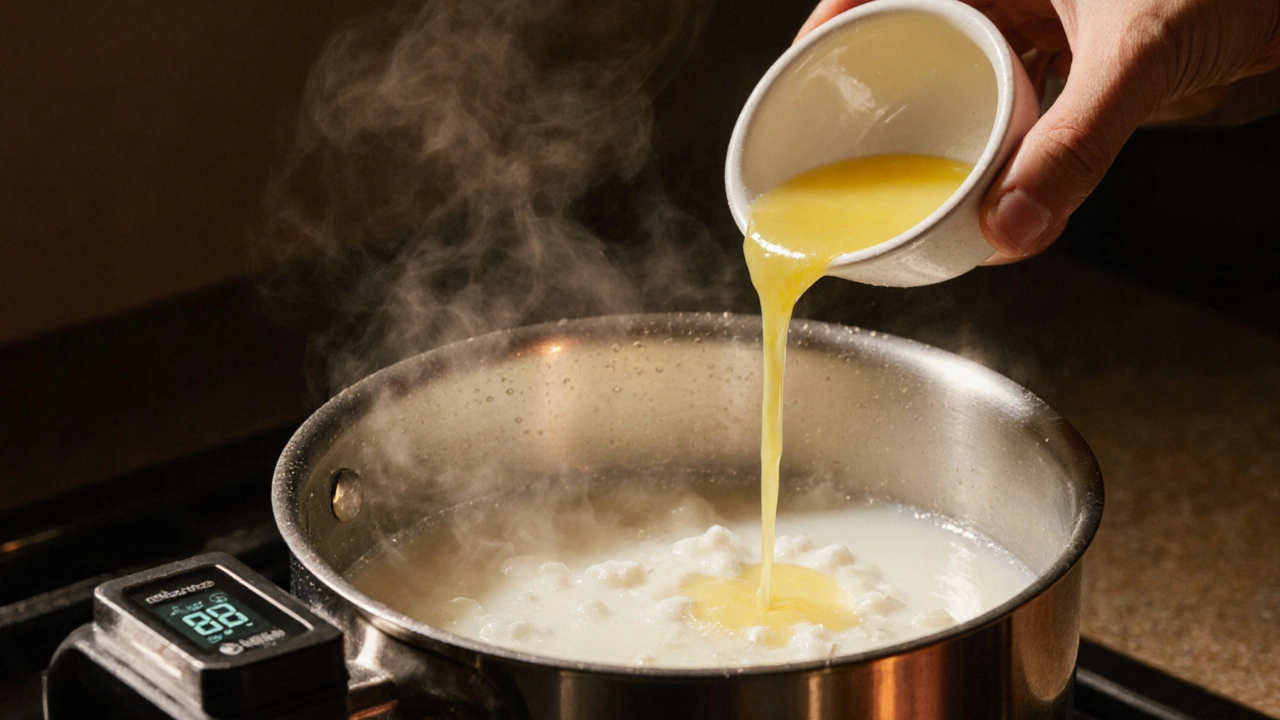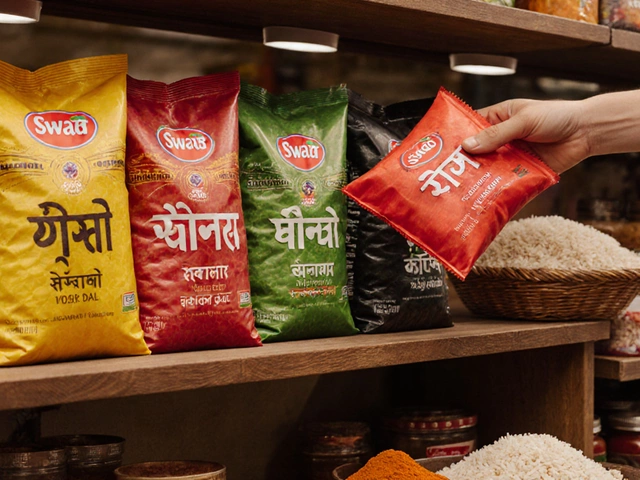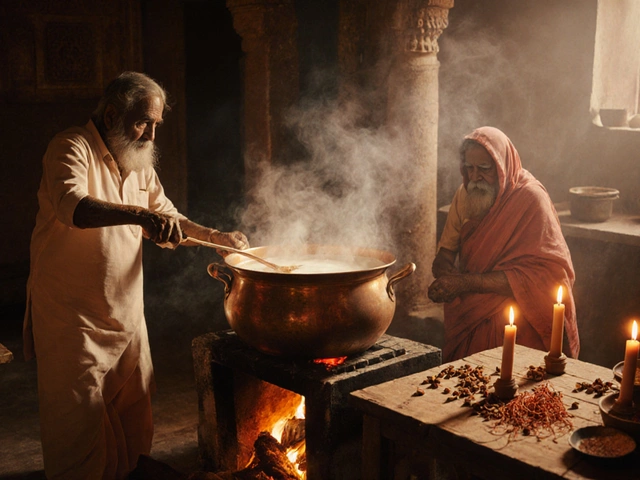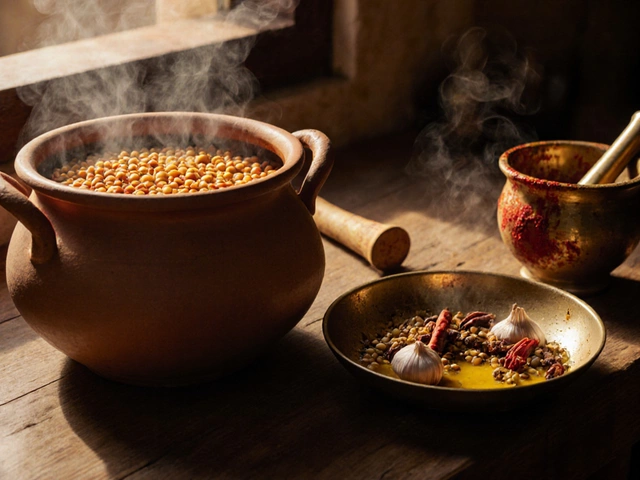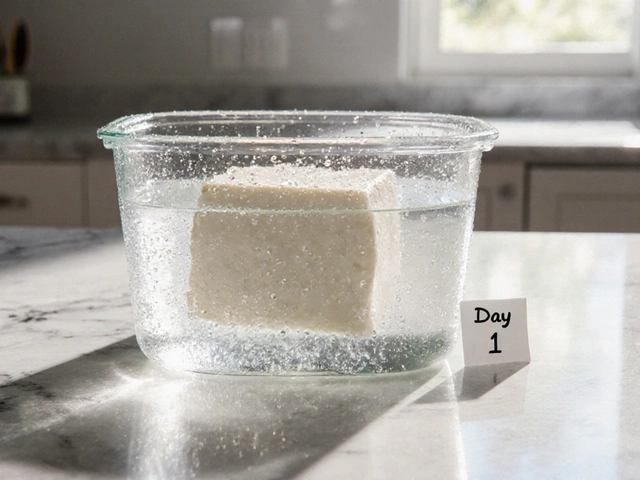Paneer Making Acid Calculator
Calculate Acid Amount for Homemade Paneer
Get the right amount of acid for perfect paneer every time
Recommended Acid Amount
When you heat fresh milk a nutrient‑rich liquid that contains proteins, fats, lactose, and minerals and add a touch of acid, the proteins clump together and the solid part - paneer a fresh Indian cheese made by coagulating milk separates from the watery whey. This simplepaneer making trick is the backbone of countless Indian dishes, from buttery saag paneer to crisp paneer tikka. Below you’ll discover exactly how the separation works, the step‑by‑step technique, and practical tips so your paneer turns out firm, buttery, and ready to melt on demand.
Why Milk Turns Into Paneer: The Science of Coagulation
Milk’s main protein is casein a phosphoprotein that forms micelles suspended in the liquid. These micelles stay stable because they carry a negative charge that repels each other. When you raise the temperature to about 85‑90°C (185‑194°F), the micelles expand and become more sensitive to pH changes.
Adding an acid a substance with a pH below 7 that donates hydrogen ions (like lemon juice, white vinegar, or food‑grade citric acid) lowers the milk’s pH to around 4.6. At this point the negative charge on casein disappears, the micelles collapse, and they aggregate into a network that traps fat and water - the curd. The remaining liquid, now called whey the watery by‑product of cheese making, rich in lactose and soluble proteins, is poured off.
Choosing the Right Acid: Flavor, Strength, and Availability
| Acid | Typical Amount (per litre milk) | Flavor Impact | pH after Addition | Convenience |
|---|---|---|---|---|
| Fresh Lemon Juice | 2-3Tbsp | Light citrus note | ~4.5 | Readily available, natural |
| White Vinegar | 1.5-2Tbsp | Subtle tang, no fruit flavor | ~4.3 | Long shelf‑life, cheap |
| Food‑grade Citric Acid (powder) | ½tsp dissolved in 1Tbsp water | Neutral, no added taste | ~4.2 | Precise dosing, good for bulk |
All three work well, but if you want a faint lemony aroma in your paneer, fresh lemon juice is the winner. For a neutral taste that lets spices shine, citric acid is ideal.
Equipment Checklist - What You Need Before You Start
- Heavy‑bottom pot prevents scorching while heating milk
- Thermometer gives accurate temperature reading (optional but highly recommended)
- Cheesecloth a loosely woven cotton fabric for draining curds or a clean muslin bag
- Fine‑mesh strainer or colander
- Large bowl to catch whey
- Measuring spoons and a ladle
Using a heavy‑bottom pot and a thermometer eliminates two of the most common paneer failures: scorching the milk and stopping the curdling process too early.
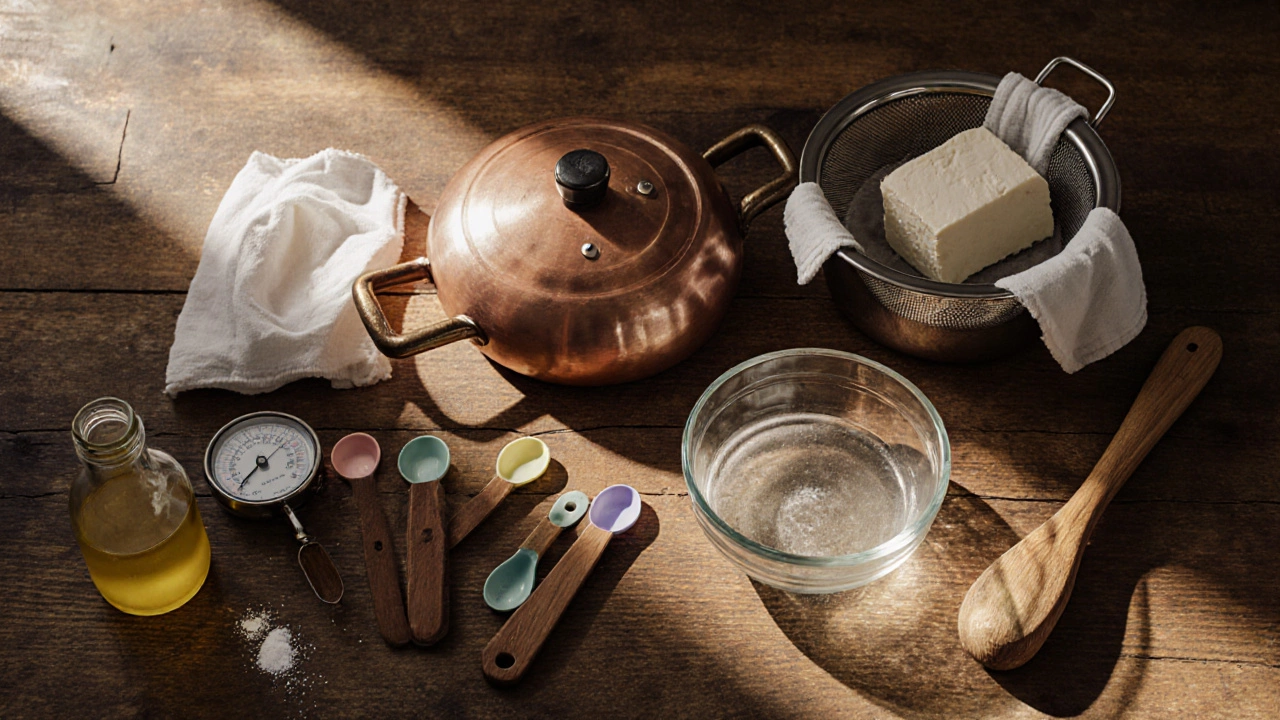
Step‑by‑Step: From Milk to Paneer in 15 Minutes
- Measure 1litre of full‑fat fresh milk. Full fat (around 3.5-4% butterfat) yields richer paneer.
- Pour the milk into the heavy‑bottom pot and set on medium‑high heat. Stir gently to avoid a skin forming.
- When the milk reaches 85‑90°C (use the thermometer), turn off the heat. You’ll see tiny bubbles forming around the edges - that’s the right temperature.
- Slowly add your chosen acid (e.g., 2Tbsp lemon juice) while stirring gently. Within 30‑60seconds the milk will separate into white curds and clear whey.
- Let the mixture sit undisturbed for 2‑3minutes to allow the curds to fully coagulate.
- Place the cheesecloth over the strainer, set the strainer over a bowl, and carefully pour the curd‑whey mixture through. The whey will collect below; the curds stay in the cloth.
- Gather the corners of the cheesecloth, twist gently, and press out excess whey. For soft paneer, stop here. For firmer blocks, place the wrapped curds on a flat surface, put a heavy plate on top, and let it sit for 15‑20minutes.
- Unwrap the paneer. Cut into cubes or slices, and either use immediately or store in an airtight container with a little cold water (change water daily) for up to 3days in the fridge.
That’s it - a complete, reproducible method that works whether you’re in Brighton or Bangalore.
Common Pitfalls and How to Avoid Them
- Milk scalds before curdling: Keep the heat moderate and use a heavy pot. A quick temperature spike burns casein, making the curd grainy.
- Acid added too early: The milk must reach the target temperature first. Adding acid too soon yields a soft, non‑coagulating mixture.
- Not enough acid: If the pH stays above 5, the curds will be loose and break apart during draining. Add a teaspoon more and stir gently.
- Over‑pressing: Pressing too hard squeezes out moisture and makes paneer dry and crumbly. Light, even pressure is enough for most home recipes.
- Using low‑fat milk: Fat contributes to the buttery mouthfeel. Skim milk produces a rubbery texture and a bland taste.
Beyond the Basics: Adding Flavors and Using Paneer in Meals
Once you master the separation, you can experiment:
- Mix a pinch of salt or a dash of smoked paprika into the curds before pressing for a subtle flavor boost.
- Stir in finely chopped herbs (cilantro, mint) for fresh summer salads.
- Freeze paneer cubes in a freezer‑safe bag for later use; they thaw quickly in warm water.
Paneer shines in high‑heat cooking because it holds its shape. Grill cubes on skewers, fry them for paneer pakoras, or crumble them into creamy Dal Makhani for extra richness.
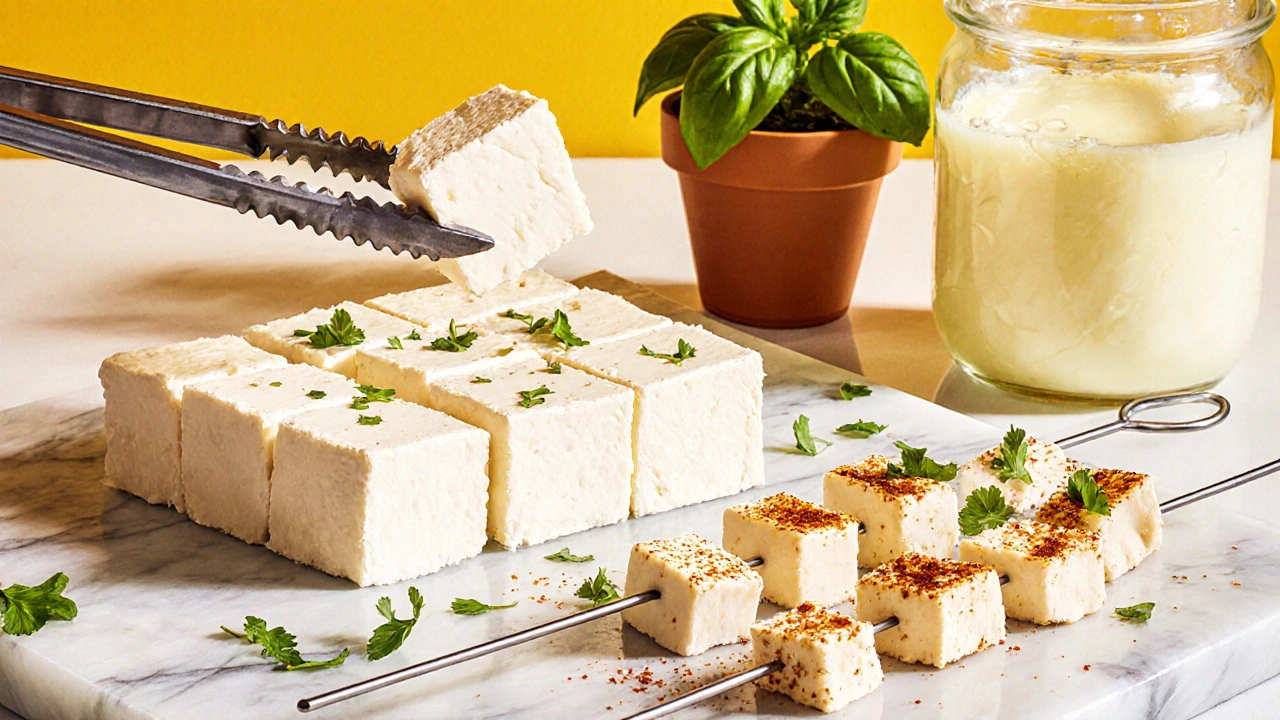
Storing and Reusing Whey - A Waste‑Not Principle
The liquid you pour off isn’t just waste. Whey contains lactose, vitamins, and soluble proteins. Keep it in a clean jar and use it to:
- Make a light soup base for khichdi.
- Water houseplants - the minerals act as a natural fertilizer.
- Replace water in bread dough for a subtle tang.
Whey keeps in the fridge for up to a week. Freeze larger batches for future use.
Quick Reference Checklist
- Full‑fat milk, 1L
- Heat to 85‑90°C
- Acid: 2‑3Tbsp lemon juice (or equivalent)
- Cheesecloth & strainer
- Press for 15‑20min for firm paneer
- Store in cold water, change daily
Frequently Asked Questions
Can I use low‑fat or skim milk to make paneer?
Low‑fat milk will coagulate, but the resulting paneer is often dry and lacks the characteristic buttery feel. For a healthier version, try 2% milk and add a teaspoon of butter after pressing.
Is it okay to substitute dairy‑free milk (like almond or soy) for paneer?
Plant milks lack casein, the protein that forms the curd, so they won’t produce true paneer. You can make similar “tofu‑style” cheeses, but they won’t have the same texture or melt‑ability.
How much paneer can I expect from 1litre of milk?
Typically 150‑180grams of firm paneer, depending on how much whey you press out. Softer paneer retains more moisture and weighs slightly more.
Should I add salt before or after pressing?
Both work, but adding a pinch of salt to the curds before pressing distributes flavor evenly. If you prefer a cleaner taste for specific dishes, season after pressing.
Can I reuse the same pot for the next batch without cleaning?
It’s best to rinse the pot thoroughly. Residual whey can alter the pH of the next batch, leading to unpredictable curd formation.
